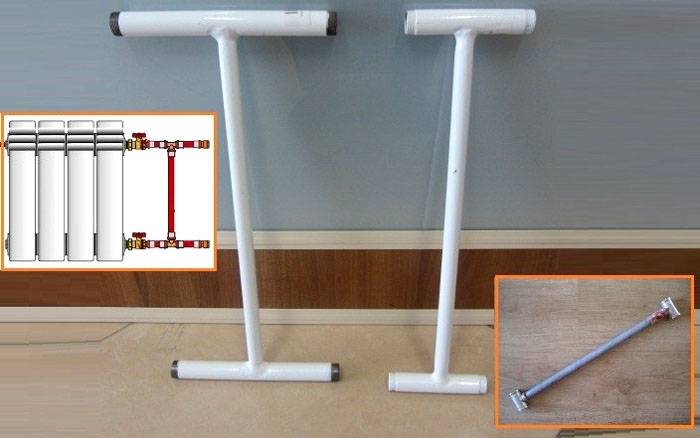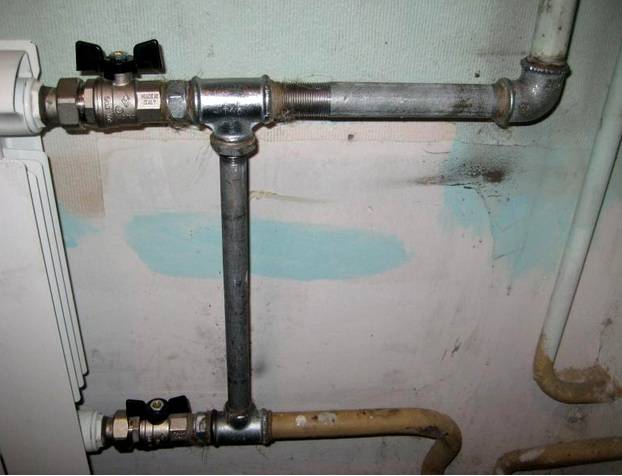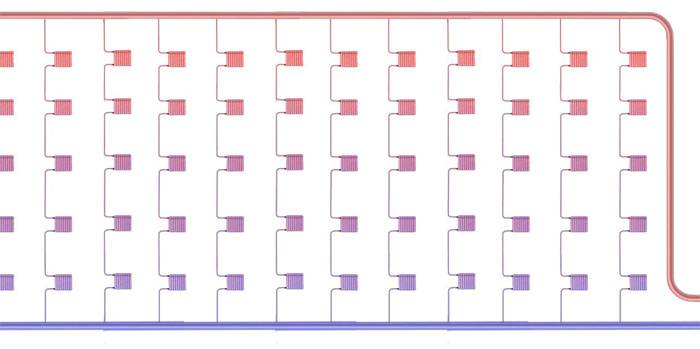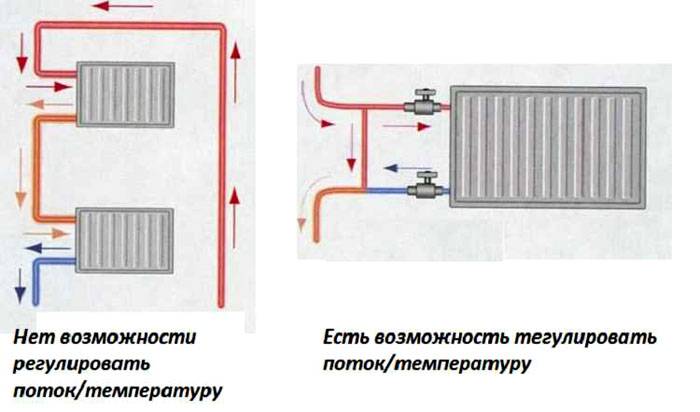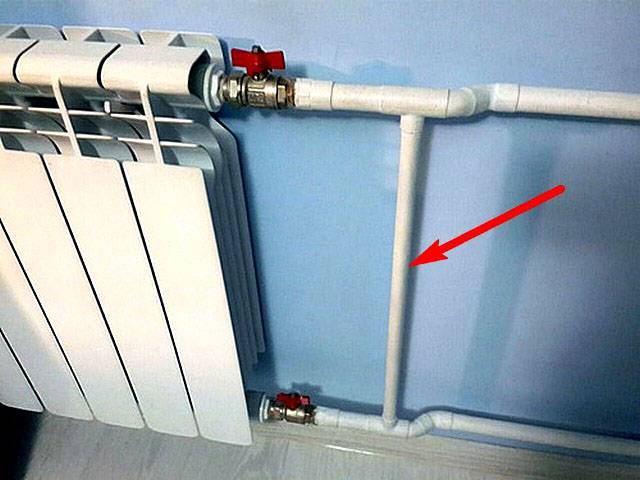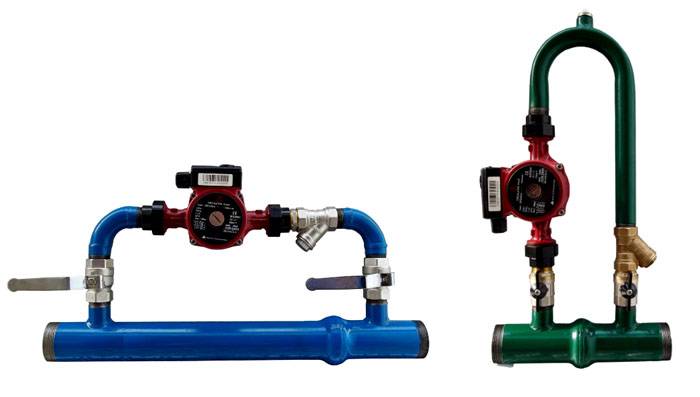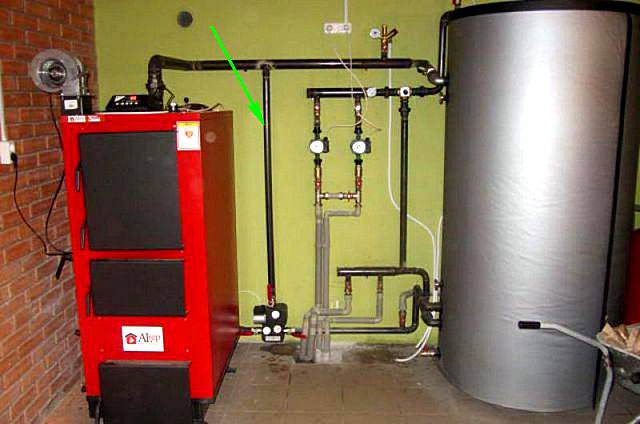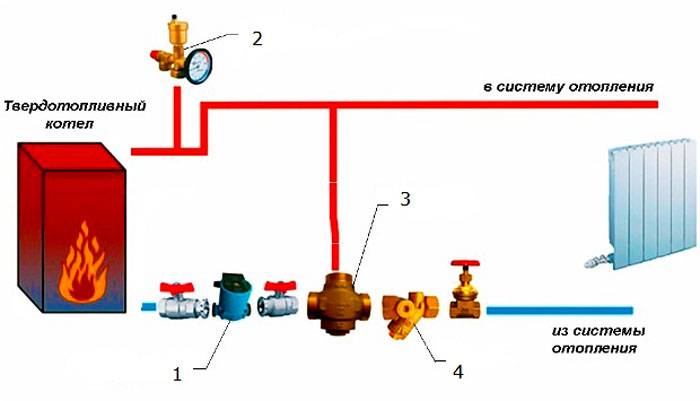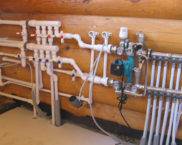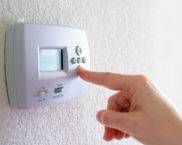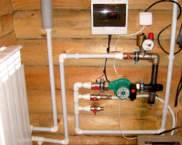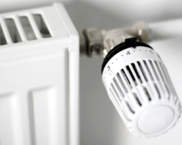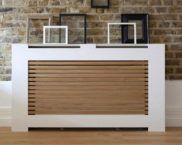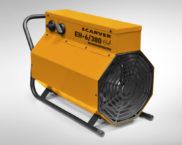Bypass device in the heating system: what is it?
In almost every project based on prefabricated models from many parts, the heating system is also a rather complex structure. Ignoring individual assembly nuances can lead to a malfunction of the entire project. This article will fully disclose the issue of bypass in the heating system and what it is. After all, a person who is not aware of the details can fall for inexperienced installers, or make gross mistakes when assembling heating with his own hands.
The content of the article
What is a bypass and a type of structure in the heating system
Of course, such an overseas word as bypass can scare anyone who does not understand heating water systems. But not everything is so bad.
Bypass in the heating system, what is it
What is this, bypass mode? The word Bypass is translated from English as "backup path", "bypass", "detour". In reality, it is a piece of pipe that is cut in front of a battery or other device in the system. This device is intended for organizing the revision, repair or complete replacement of individual heating parts. With the help of such a device, the water flowing through the pipes has an additional route to bypass the battery. Outside the bypass, additional valves are installed, when closed, the entire heating continues to work, and the closed battery becomes available for all kinds of manipulations with it. This option is applicable both for stand-alone systems and for centralized single-pipe risers.
Note! Compliance with all GOSTs that relate to the heating system will save you not only from unnecessary fines, but will also become the guarantor of the correct performance of all units.
Types of structures
- Heating bypass with non-return valve is a fully automatic system, which is mainly installed on the pump. The principle of operation lies in the fact that the excess pressure that the pump creates opens the valve for the passage of the coolant. When the pump is turned off, the valve closes, but if any scale or debris gets in, the valve may fail.
- A conventional bypass without additional equipment is a system for manual regulation of the heating medium supply to individual units of the system. By installing a temperature sensor at the water inlet to the battery, it is possible to provide a specific temperature for all radiators separately, which would be impossible in the absence of a bypass pipe. To know all the nuances, you need to understand what a bypass is in heating.
Examples of designs using bypass
There are a lot of mounting options for this element. But the most common and effective ways are listed below.
Installation of a conventional bypass in the centralized heating of a multi-storey building
All old-style skyscrapers are equipped with one-pipe heating systems. This design option was chosen due to the low cost of assembly, which excluded additional elements. But the main disadvantage is the failure of the heating of the entire house, due to an accident on any floor. Because to carry out repairs, you need to turn off the central heat supply.
So why do you need a bypass in the heating system? In order to improve such a flaw, it is necessary to embed an additional bypass pipe in each apartment. Each apartment owner is not obliged to do this, but technically, he will only be in the black.
Note! The insertion procedure should be carried out from May to September inclusive. Since the heat supply is not carried out at this time. And yet, it is forbidden to install a shut-off valve directly on the bypass, this is contrary to GOST, the main thing is to figure out what a bypass is in the heating system.
Bypass application for circulation pump and autonomous heating
- If the heated area does not exceed 30 sq. M., Then due to the pressure that is created during the mechanical heating of water, natural circulation occurs. In this case, the bypass is used only in the battery units.
- In the case of a larger area, the design requires the installation of an electric water pump. Here, a bypass is installed not only on each battery, but the pump is also connected through a check valve.
- When the room is heated with solid fuel boiler, then it is often associated with boiler for heating hot water... This means that the system has two heat exchanger circuits. The bypass is installed as in the first two options, but a third node appears, which needs such an addition. It is necessary to separate the small circuit from the large one, which means separating the heating of the house from the boiler.
- We continue to talk about boilers for solid fuels... In addition to the boiler, there are other technical features that require the installation of additional equipment. The fact is that due to the huge temperature inside the boiler, the incoming cooled water from the system can lead to the formation of corrosion and quickly disable the heating. To avoid this, a small circuit is made into which a special three-way tap is cut into, it combines the return flow and the supply of hot water taken from the boiler supply. This valve initially has a set temperature (50-60 degrees). Such a device allows you to quickly heat the coolant in a small circuit to avoid condensation due to a large temperature difference.
Note! When assembling any units related to water supply, it is necessary to be very careful about the threaded connections. Be sure to use tow and other devices to seal the joints. Never buy low quality materials, they will not last long.
Bypass valve what is it
This valve is designed to prevent heating shutdown in case of power failure. When the pump stops, the valve shuts off the flow of the heat exchanger to the pump and opens natural circulation.
Bypass wiring diagrams in different systems
- Regular by-pass pipe without additional equipment
1.Pipe billet; 2.Rack; 3. Coupling; 4.Lock nut; 5. Bypass; 6.Rack; 7.Radiator thermostat with valve; 8.Shaft; 9.Stop valve; 10.Radiator plug; 11.Radiator plug; 12. Air vent valve; 13.Cap;
- Water pump connection via bypass
- Connection diagram of a three-way valve to a solid fuel boiler
1.Circulation pump; 2.Security group; 3. Three-way valve; 4. Mud sump;
Tips & Tricks
- If you are going to install a bypass in central heating, then you must notify the representatives of housing and communal services about this (in writing). They must coordinate the temporary shutdown of heating with the boiler room.
- Each installation of gas equipment in an apartment or a private house is accompanied by an order from the project owner from a public or private designer. We advise you to check all the nodes indicated in the papers, so that after you accept the project there are no misunderstandings due to the absence of something on the diagram, but the presence of this part in the finished product.
- In case of installation electric boiler, power up to 5 kW, project order is not needed. But the installation of the system must be done with an invited specialist, in order to avoid critical errors.
- When buying a boiler, pay attention to the quality and safety certificates. This will save you and those around you from unexpected breakdowns and accidents.
- When the pipeline is assembled using PVC welded pipes, you need to monitor the pressing force at the time of the joints soldering. Excessive pressure on the heated solder ends will lead to clogging of the flow force of the heat exchanger.
Video: bypass in the heating system
General conclusion
The implementation of the idea of cutting a bypass into the heating system, regardless of the type of project, will certainly only play a positive role. It is impossible to save on details that increase the efficiency of the system and the practicality of repair. A rather modest element has far from small ambitions, take this fact into account when choosing a heating system design. Now you know everything about the bypass in the heating system and what it is.




